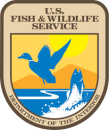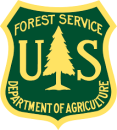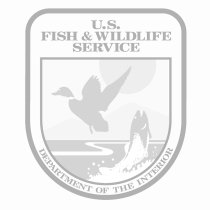Location
States
Nevada, UtahEcosystem
Desert, WetlandIntroduction
The Conservation Agreement has been developed to assist in the implementation of conservation measures for springsnail species in Nevada, Utah, and adjacent areas as a collaborative and cooperative effort among resource agencies, governments, and landowners. The parties to this agreement believe that implementing the conservation objectives defined will benefit springsnails. The Conservation Agreement and Strategy are intended to provide for species and habitat conservation needs and to significantly reduce or eliminate threats, thus providing needed conservation that will ensure the persistence of these species on a local and landscape scale and, if fully implemented, should reduce the likelihood of listing these species under the Endangered Species Act (ESA) in the future. Conservation of springsnails and their associated habitats is also likely to benefit many other spring-dependent at-risk species, which also could reduce the likelihood for ESA-listing of these species. The Federal listing of species may increase awareness and funding of conservation needs; however, listing can increase management complexity and create additional challenges to implementing conservation projects for those species on both public and private lands.
Key Issues Addressed
Springsnails are generally tiny aquatic, fresh- or brackish-water snails in the order Neotaenioglossa. They are highly diverse, often closely adapted to individual springs, and their conservation has become the subject of increasing concern. More than 180 species of springsnails have been described in North America, and they are particularly diverse in arid Nevada and Utah, where at least 103 species have been identified. Springsnails typically occur in or very near spring sources, and tend to be local endemics, in many cases occurring at only one or a few water sources and tightly adapted to the water quality and habitat conditions of their individual springs. Increasing concern for the viability of springsnail populations and the habitats they occupy in Nevada, Utah, and elsewhere has arisen due to intensive groundwater extraction and use, the widespread use of springs for domestic and agricultural purposes, and the limited availability of reliable information on the status of many populations. Two southwestern species (Black River springsnail - Pyrgulopsis trivialis, and San Bernardino springsnail - P. bernardina) were recently federally listed in Arizona, and several southwestern species have reportedly gone extinct in the past few decades. The current status of many populations and species remains unknown. Declining health of springsnail populations and their habitats can lead the U.S. Fish and Wildlife Service (USFWS), as well as state wildlife agencies, to invoke protection of springsnails under the Endangered Species Act (1973, as amended), or under state statutes.
Project Goals
The primary goal of this Agreement is to ensure the continued persistence of springsnails and their habitats in Nevada and Utah to preclude ESA listing. The goal will be achieved through implementation of specific objectives set forth below and conservation measures identified in the Strategy. The Springsnail Conservation Team (SCT) will evaluate the status of springsnail species annually through an adaptive management framework to assess program progress.
- Compile known springsnail distribution, status, and habitat data into a single comprehensive and accessible database and incorporate new information as it becomes available to manage extant and future spatial and biological information for springsnail conservation
- Identify, assess, and reduce known and potential threats to springsnail populations and their associated habitats at occupied sites
- Maintain, enhance, and restore springsnail habitats in Nevada and Utah to ensure the continued persistence of the species
- Develop a Springsnail Conservation Team (SCT), which will be tasked with development and implementation of the Strategy and coordinating on-the- ground conservation actions for identified springsnail species and habitats
- Create education and outreach tools that generate broad awareness and strong support for the conservation of springsnails and their habitats among landowners, agencies, and the general public
Project Highlights
Counting Snails: Surveyors get wet and dirty in spring runs looking for springsnails on rocks, sediment, vegetation, detritus, and in all the nooks and crannies.
- Collaboration to Conservation: This collaborative and cooperative effort contributed to increased willingness by partners to engage in the effort. It has made it easier for springsnail conservation activities to be incorporated into on-the-ground projects.
- Springsnail Conservation Team (SCT): The SCT will ensure consistent review and adaptive management of conservation actions and activities for identified springsnail species and habitats. They will cooperate and coordinate with multi-state and multi-agency springsnail conservation efforts to facilitate the development of strong partnerships leading to enhanced springs and habitat.
- A Centralized Springsnail Database: The database will enable biologists and managers to readily identify information gaps, species descriptions, life history information and habitat conditions, population abundance and status, known locations of occurrence, known threats and the magnitude of those threats, historical information, and other relevant information as it becomes available.
Lessons Learned
Nevada, the nation’s driest state, presently is recognized as having the highest density of springs in the USA, with an estimated 27,000 springs. Utah also supports a high density of springs, with at least 10,121 springs reported. Accomplishing a thorough springsnail inventory across the entire region will require an organized and concerted effort over at least the next decade, not to mention collaboration with taxonomic and habitat experts as well as consistent, regularly updated information management to track populations and springs ecosystem status.
Contributing to the centralized springsnail database results in information that leads to informed conservation actions. It does have its challenges: multiple agencies from multiple states collect data differently; sharing permissions for the data they collect differ, especially those based on land ownership. Springsnails are typically associated with one spring which can easily be found on a map meaning that data can be tied to a specific location and landowner which may not be desirable for the landowner. This requires finding a balance between data security and data availability to improve willingness of landowners to cooperate in this effort and providing options for how data can be shared while still protecting privacy. Collecting data using standardized survey protocols builds confidence that accurate data is being collected and leads to informed decision-making. Ensuring the data is secure in the centralized database is critical.
Limited funding is available to maintain, enhance, and restore springsnail habitats, i.e., springs, in Nevada and Utah. Springs are a critical source of water in the desert for both wildlife and people. Conservation activities that minimize impact to a spring and allow it to recover lead to a more dependable water source in the future. Additional funding would facilitate preemptive, collaborative, voluntary conservation efforts to enhance springsnail habitat which would help to protect a sensitive species and in turn minimize the risk of listing.
Next Steps
- Develop education and outreach tools sharing a common and consistent message with conservation partners including private landowners and the public: Emphasize that by allowing the springhead to recover, a more sustainable water source is created
- Update springsnail genetics and morphology for species found in Nevada and Utah
- Develop a risk assessment tool that can assist in prioritizing conservation efforts for springsnails
Resources
- Conservation Agreement and Strategy
- Crookshanks, C., SjÖberg, J., Miskow, E., Szabo, K., Holcomb, K., Wheeler, K., Stevens, L., Mellon, C., Mellison, C., Schwemm, M., Saito, L., Van Horne, R., Phillippi, M., Wullschleger, J. (2020). Poster: “Conservation Agreement and Strategy for Springsnails in Nevada and Utah.”
- Nehalem et al. (2021). “Intermountain Region–Rocky Mountain Research Station Science Partner Program: A road map to connecting Forest Service science and management.” Res. Note RMRS-RN-89. Fort Collins, CO: U.S. Department of Agriculture, Forest Service, Rocky Mountain Research Station. 42 p.
- Gurrieri, J.T. (2020). “Rangeland water developments at springs: best practices for design, rehabilitation, and restoration.” Gen. Tech. Rep. RMRS-GTR-405. Fort Collins, CO: U.S. Department of Agriculture, Forest Service, Rocky Mountain Research Station. 21 p.
- Bureau of Land Management (Nevada and Utah)
- Natural Resources Conservation Service (Nevada and Utah)
- U.S. Forest Service (Intermountain Region)
Contacts
- Chair – Kate Holcomb, Utah Division of Wildlife Resources: kholcomb@utah.gov
- Assistant Chair – Cassie Mellon, Bureau of Land Management: cmellon@blm.gov
- Assistant Chair – Chris Crookshanks, Nevada Department of Wildlife: ccrookshanks@ndow.org
- Previous Chair – Jon Sjoberg, Nevada Department of Wildlife (retired): jcsjoberg@charter.net
- Secretary – Kristin Szabo, Nevada Division of Natural Heritage: kszabo@heritage.nv.gov
Case Study Lead Author
Cheryl Mandich, Fish and Wildlife Biologist, Partners for Fish and Wildlife, U.S Fish and Wildlife Service: cheryl_mandich@fws.gov
Suggested Citation
Springsnail Conservation Team – Communications Subcommittee (Abele, S.L., Bush, A.P., Krott, M.A., Mandich, C.A., Mellison, S.C., Mellon, C.D., Van horne, R.M), and Grabau, M.R. (2022). “Conservation Agreement for Springsnails in Nevada and Utah.” CART. Retrieved from https://www.fws.gov/project/conservation-agreement-springsnails.











